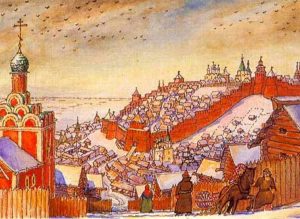In anticipation of the launch of the I All-Russian Pharmaceutical Run, we publish historical essays on the history of the development of the healthcare system and pharmacology in the cities participating in the large-scale action. Indeed, respect for traditions, support for the old school, the transfer of best practices and a healthy mentoring system are key to the development of a successful future. The pharmaceutical industry is no exception.
Author: historian, publicist Stanislav Chagin
Since ancient times, there were many healers on the territory of Russia, whom the ancient Slavs respected, but at the same time were afraid. & Nbsp; They were somewhat reminiscent of sorcerers or druids, and often in the Middle Ages people really mistook the ability to cure diseases. But time passed and at the turn of the 17th and 18th centuries, too many charlatans became rich among doctors, who got rich on fake vaccines. It was not profitable for them to produce a quality product. Pharmaceutical orders could not cope with this problem. In this regard, Peter I issued a special decree on the consciousness of pharmacies and ordered strict monitoring of fake drugs. The shops of doctors were abolished, a unified unified state standard was introduced.
After the death of the first emperor, the situation with medical institutions improved. In 1780, at the invitation of Catherine the Second, a young German “gesel” Georg Christian Ludwig Evenius arrived in Nizhny Novgorod, who opened the first free pharmacy. Gesels were then called pharmacists. Egor Krestyanovich, as the locals called him, always displayed flasks and vessels in the windows, giving pharmacies the appearance of an ancient alchemical laboratory, and glass balls filled with colored liquids, before the appearance of electric lamps, served as lighting.
Nizhny Novgorod, built on the Volga navigable river, was rapidly expanding and, with the development of shipping in the 19th century, due to the sharply increased population, opening new pharmacies was required.
With the reforms of Alexander II, Nizhny Novgorod pharmaceuticals and medicine moved to a new level. They came under the control of zemstvos. So, Makarievsky district in 1868 opened the first in Russia zemstvo pharmacy.
Since 1918, a real revolution has taken place both in the country and in pharmacology, which was associated with the creation of the People’s Health Commissariat, headed by Nikolai Alexandrovich Semashko. At the end of the same year, all pharmacies were nationalized. In honor of the first People’s Commissar of Health, the Nizhny Novgorod Provincial Hospital in 1936 was named after him.
With the outbreak of World War II, pharmaceutical business suffered great damage. The task was to put a huge amount of medicines on the front. So, during the war years, four pharmaceutical plants were built, among which only one remained to function.
In the postwar years, pharmacology in the field expanded and improved, applying new technologies in the production of drugs, as a result of the development of Soviet scientists. Soviet medicines were considered one of the best in the world.
But with the collapse of the USSR, the quality of medicines declined, which also affected population losses in the unstable 90s. The Gorky Chemical Plant, which was built during the war and the only one that retained its functioning, also affected the same thing. So, in 1990, about 134 million drugs were produced, and after three years up to 45 million. As a result of privatization, the plant was given the new name of OJSC Nizhny Novgorod Chemical and Pharmaceutical Plant or OJSC Nizhpharm. Only in the late 1990s and in the early 2000s did the position of the pharmaceutical industry begin to stabilize and in 2004 did Nizhpharm take the first place in the ranking of the most influential companies and individuals in the nomination “Domestic Manufacturer”. In the niche days, Nizhpharm is attractive to foreign investors and manufacturers.
